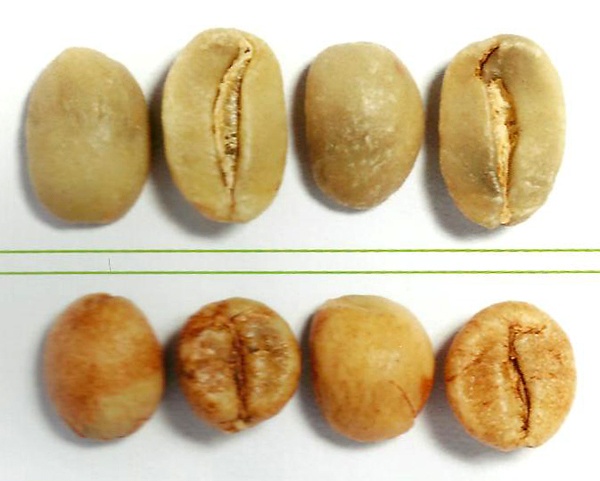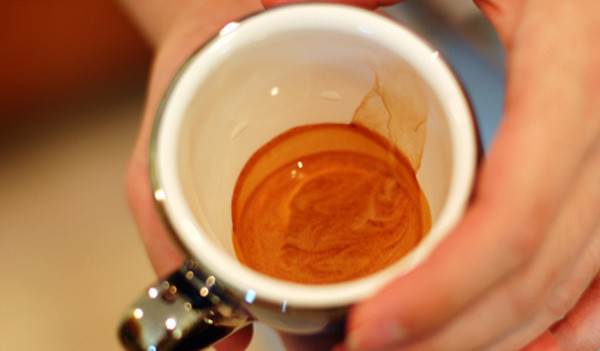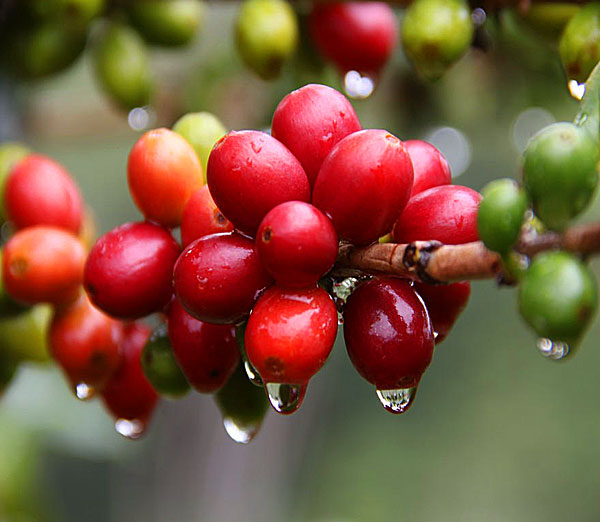The main varieties of coffee are Arabica and Robusta Arabica coffee tree Robusta coffee
Climate extremes can be devastating to crops, especially coffee, which researchers say is "the canary in a coal mine for climate change." This means that coffee plants are the most sensitive to climate change, and the slightest change in climate can affect coffee harvests; coffee trees, especially arabica varieties, are highly vulnerable to all the signs of global warming.
Leaf rust pounces on high altitudes
Coffee varieties are mainly Arabica and Robusta two varieties, the former flavor is better, mostly used in coffee shops, the latter flavor is slightly worse, mostly used for instant coffee. Arabica is grown in the so-called "coffee belt" between 25 degrees south and 25 degrees north latitude, but Arabica is not suitable for tropical areas with high temperature and humidity, so most of it is planted at heights above 1,000 meters. The most suitable geology is weak acid and good drainage soil, such as volcanic ash soil. Therefore, Arabica coffee trees grow best in volcanic active areas such as Central America and Hawaii.
Arabica coffee trees are more sensitive to temperature than other crops, and a few degrees of increase in temperature can affect their growth; high temperatures can cause pests such as coffee berry borers, and high temperatures can cause leaf rust and blight, both of which can be attributed to climate change. Rain has a great effect on coffee growth. Too much rain causes great disturbance when coffee trees bloom and pollinate; too little rain when berries are formed may wither on the trees. The recent drought in Brazil, with only 11 mm of rain in 49 days in coffee-producing areas, has severely affected harvests and coffee bean quality, and it is estimated that 10% of Brazil's most productive coffee areas may be forced to abandon in the coming years.
Central America, which is rich in high-quality Arabica coffee beans, has had an outbreak of leaf rust since 2012, which is the worst disaster in 30 years. Coffee production in the region has dropped by 20 - 30%, 370,000 people have lost their jobs. In February 2013, Guatemala declared a national emergency, and 70% of coffee trees in the country were infected with leaf rust. In response to leaf rust, mainly resistant varieties are replanted, but this requires cutting down trees, affecting returns in the next few years. Other varieties can be replanted, but they affect the quality of coffee, and so far the best Arabica flavors have been non-leaf rust resistant varieties.
Rising temperatures have led to the spread of leaf rust to higher elevations in Central America and northern South America. In the past, leaf rust did not rise above 1500 meters, but now it is almost 2,000 meters high. Uganda leaf rust climbs 300 m in East Africa. The berry moth, which was originally only found at low altitudes in East Africa, climbs 300 m in 10 years due to rising temperatures.
Arabica production conditions in Central America are getting worse, leaf rust and climate change have hit the region's high-quality, high-priced coffee beans hard, and Arabica may move to higher latitudes such as Texas in the next few decades, but Arabica's beautiful flavor may be greatly reduced. Coffee researchers coined the term peak coffee, borrowing the oil world's "peak oil" term, to mean that cheap, easily accessible fine coffee beans are gone forever and that a cup of coffee will only get more expensive in the future.
Coffee just keeps getting more expensive.
Production of high-quality arabica is hard to keep up in extreme weather, and on the demand side, coffee is increasingly drunk and better in emerging countries, such as the mainland of China, where coffee consumption grew 20-fold from 1998 to 2012. Therefore, good coffee may be rare treasures in the future and have to pay a higher price. Fortunately, fine coffee is not easy to preserve, otherwise it will become collectibles.
International coffee bean prices fell to a seven-year low last year, and consumers thought they could drink cheaper coffee, but coffee prices still didn't come down. Starbucks, for example, adjusted upwards. The reason is that the price of coffee beans only accounts for about 10% of the cost of chain coffee shops. In addition, fine coffee and commodity coffee are not the same market. The output of fine coffee is limited. For example, the real Jamaica Blue Mountain Coffee has an annual output of only 40,000 bags (2.4 million kilograms). With such a small output, the price will certainly go up all the way. Because of the quality requirements of fine coffee, when commodity coffee falls sharply, fine coffee does not necessarily fall; but when commodity coffee is expensive, all coffee beans will rise.
A microcosm of the global problem can be seen in the microworld of coffee beans: Starbucks bought coffee farms for the first time to develop new varieties of coffee to fight climate change; coffee merchants make big profits, coffee farmers struggle with poverty online, and the bourgeois drink "fair trade coffee", which is a small salvation of conscience; and the thought of high-quality, low-price espresso is a thing of the past century!

Important Notice :
前街咖啡 FrontStreet Coffee has moved to new addredd:
FrontStreet Coffee Address: 315,Donghua East Road,GuangZhou
Tel:020 38364473
- Prev

What is espresso espresso and the choice of tasting coffee beans Italian coffee culture
The method of making espresso originated in Italy, and the so-called Italian style is Italian style. In the beginning, when the Italian coffee machine was invented, the Italians used Robbosa beans, and many coffee writers gave their views on why they chose this rustic but not delicious variety. Some say that Italy's economy was so bad at that time that it could only afford to drink robusta beans.
- Next

Development of Coffee in China Coffee production in Yunnan accelerates the development of coffee industry in Yunnan Province
Yunnan Province is the largest coffee bean production base in China. Recently, Yunnan Province has issued opinions to speed up the development of the coffee industry from the aspects of building a high-quality coffee bean production base, building leading enterprises, and upgrading the level of science and technology. The Coffee Industry Development Plan (20102020) issued by Yunnan Province proposes to build Yunnan into the raw material base of the world's high-quality coffee beans in the next ten years.
Related
- How did the Salvadoran coffee industry develop in Central America?
- What exactly does the golden cup extraction of coffee mean?
- The Origin of Coffee flower
- [2023 Starbucks World Earth Day] there are more meaningful things besides free Starbucks coffee!
- What kind of coffee is there in Spain? 9 Flavors of Spanish Coffee
- Aromatic African coffee| Kenya's coffee culture and historical production area
- Liberica Coffee Bean knowledge: the characteristics of Liberian Coffee beans of the three original species of Coffee beans
- The origin and formula of Spanish latte introduces the taste characteristics of Bombon coffee in Valencia, Spain.
- How to adjust the solution of over-extracted coffee
- What is the tasting period of coffee beans? What is the period of coffee and beans? How should coffee wake up and raise beans?

